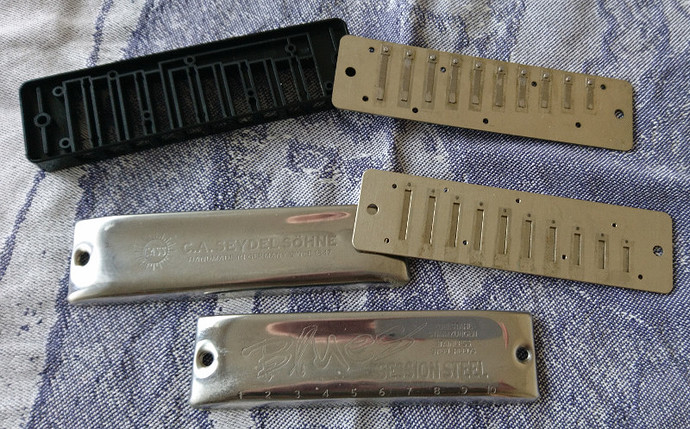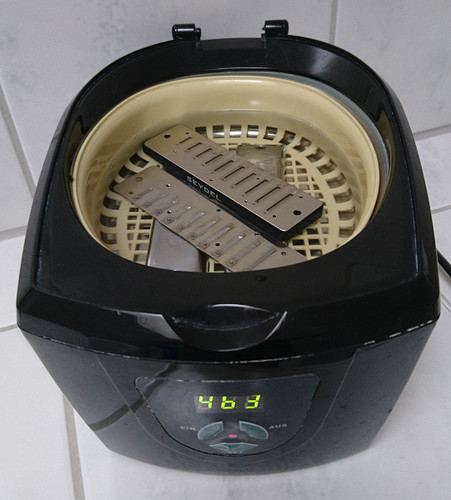OK, folks, here are two pictures made while cleaning my Seydel Session Steel harp.
Picture #1 (below) shows the disassembled harp (I don’t bother cleaning the screws). Everything will be put into the ultrasonic jewelry cleaner (which we also use to clean our reading glasses & bifocal glasses as well). I never put wood or bamboo combs into the water (better safe than sorry). For those combs I use a soft toothbrush to brush off any deposits and then spray a light coating of disinfectant spray (e.g. Lysol) and after a few seconds I wipe that off with paper towels or a light-weight clean cloth. For nasty deposits I very carefully scrape them off with a pocket knife blade, avoiding scraping off any varnish or wood.
Picture #1:
Picture #2 (below) shows the ultrasonic cleaner with sufficient warm water to cover all of the parts and with 3-4 drops of dishwashing detergent in the water. On the front side you see the control panel for turning the cleaner On/Off and for adjusting the time it will run until automatically turning itself Off. On this model the maximum time is 8 minutes and it counts down in seconds until the time has expired. As you see there is no soap foam. This is not necessary as the 3 or drops of detergent are sufficient.
Picture #2:
After the cleaner turns itself off, I then simply rinse off all parts in warm water and set them out to dry (similar to what you see in the first picture). When everything is dry, re-assemble and you are ready to rock & roll !! 
If anyone wants more info or other pictures then let me know.
Have fun,
– Slim 

